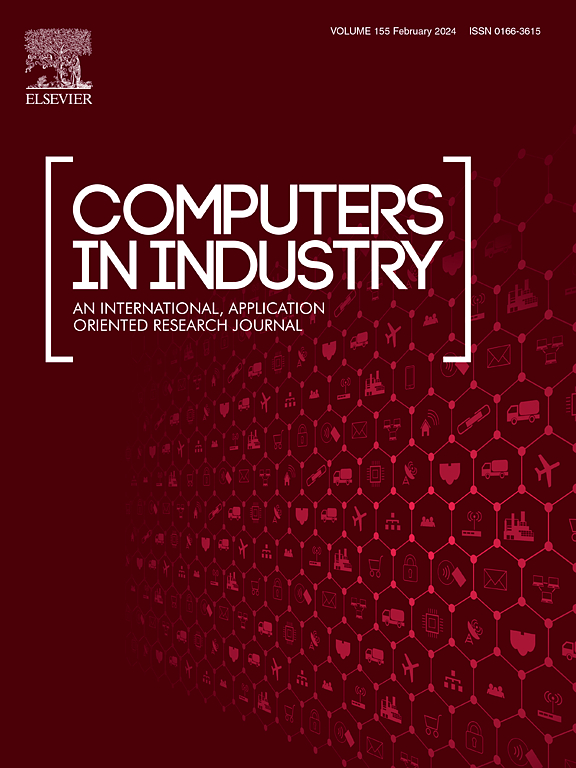基于领域对抗神经网络的小样本薄壁特征铣削变形在线预测方法
IF 9.1
1区 计算机科学
Q1 COMPUTER SCIENCE, INTERDISCIPLINARY APPLICATIONS
引用次数: 0
摘要
薄壁加工特性在航空航天工业中得到了广泛的应用,由于薄壁加工的弱刚性引起的铣削变形一直是航空航天工业中最常见的质量问题。薄壁件铣削变形的有效控制是提高加工质量的关键。然而,航空部件数据收集的高成本和耗时特性导致过程数据的可用性有限,这对预测航空部件的变形提出了重大挑战。为了解决这一问题,本研究旨在充分利用加工实验和仿真数据的小样本数据,开发高精度铣削变形预测方法。本文首先将领域对抗神经网络(DANN)与数字孪生过程模型相结合,构建了薄壁特征变形预测框架。其次,采用DANN方法实现了薄壁特征铣削变形的在线预测;少量的实验变形数据作为训练数据集的目标域,而有限元软件生成的铣削仿真数据作为源域。利用基于DANN结构的对抗训练进行领域回归和领域分类,准确预测铣削变形。最佳结果表明,该方法在有限样本条件下获得了更好的拟合优度,与五种基线方法相比,决定系数(R²)提高了5 %,平均绝对误差(MAE)降低了15 %。最后,将DANN方法集成到铣削过程的数字孪生系统中,并构建了一个原型系统来验证所建议方法的可行性。本文章由计算机程序翻译,如有差异,请以英文原文为准。
An online milling deformation prediction method for thin-walled features with domain adversarial neural networks under small samples
Thin-walled machining features are extensively utilized in the aerospace industry, where the milling deformation caused by their weak rigidity has been the most common quality concern. Efficient control of milling deformation for thin-walled features is essential for enhancing quality. However, the high cost and time-consuming nature of data collection for aviation parts, leading to a limited availability of process data, which presents a significant challenge for predicting deformation in aerospace components. To address this issue, this study aims to develop a high-precision milling deformation prediction method by fully leveraging the small-sample data from machining experiments and simulation data. This paper first constructs a thin-walled features deformation prediction framework by integrating Domain Adversarial Neural Networks (DANN) with a digital twin process model. Secondly, the DANN method is adopted to achieve online prediction of milling deformation for thin-walled features. A small quantity of experimental deformation data serves as the target domain for training dataset, whereas milling simulation data produced by finite element software serves as the source domain. Milling deformation is accurately predicted using adversarial training based on the DANN structure for domain regression and domain classification. The best results show that the proposed method achieves better goodness of fit under limited sample conditions, with a 5 % increase in the Coefficient of Determination (R²) and a 15 % reduction in Mean Absolute Error (MAE) compared to five baseline methods. In the end, the DANN approach was integrated into the digital twin system for the milling process, and a prototype system was constructed to demonstrate the viability of the suggested approach.
求助全文
通过发布文献求助,成功后即可免费获取论文全文。
去求助
来源期刊

Computers in Industry
工程技术-计算机:跨学科应用
CiteScore
18.90
自引率
8.00%
发文量
152
审稿时长
22 days
期刊介绍:
The objective of Computers in Industry is to present original, high-quality, application-oriented research papers that:
• Illuminate emerging trends and possibilities in the utilization of Information and Communication Technology in industry;
• Establish connections or integrations across various technology domains within the expansive realm of computer applications for industry;
• Foster connections or integrations across diverse application areas of ICT in industry.
 求助内容:
求助内容: 应助结果提醒方式:
应助结果提醒方式:


